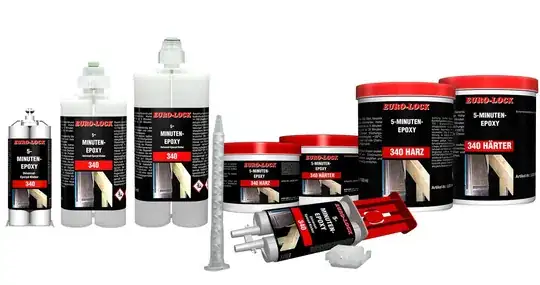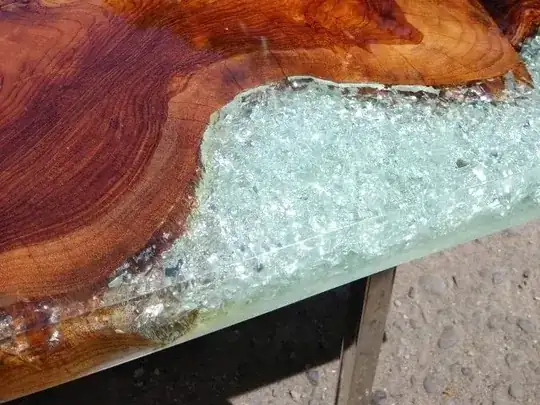I mainly write this answer to give you the possible pros and cons of using epoxy. Without seeing your project (mainly the size) I cannot recommend using it. You can achieve incredible results with epoxy, but honestly it's a difficult material.
You can find fast curing (5 - 10 minutes) epoxies in many construction stores or online. They typically look like this:

This is a random example. I'm not affiliated with the manufacturer in any way.
However, the hardener usually has a yellow tint and the cured epoxy will continue to yellow in time. Honestly it looks very old and unattraktive. You can create nice effects by tinting it red, though (read this related question). Trying to tint it blue will result in an ugly green tone.
If you want perfectly colorless and clear epoxy that won't yellow too much in time, you'll have to buy a special craft resin.

This is a random example. I'm not affiliated with the manufacturer in any way.
They are often marketed as "liquid glass", "jewelery" or "crystal" resins. However, these are usually meant to be poured and then level out on their own, so the consistency is very liquid. Different brands offer different curing times (usually between 30 minutes and 24 hours).
If you want to use such a liquid epoxy, you either need to apply many thin layers and let each cure completely, or you have to wait after mixing the components until it starts thickening up. Once the epoxy starts thickening, there's only a very short time left to work with it (until it's too hard) and you risk trapping air bubbles in it. If you plan on sanding the finished piece anyways, that might be acceptable for you.
Mixing ratios
You might get the idea that mixing more hardener into the epoxy should make it more viscous, but the opposite is true. Both components (resin and hardener) are initially liquid and must be mixed as exactly as possible in the ratio defined by the manufacturer. Having too much or not enough hardener will result in a sticky resin that never fully cures.
Fillers
Mixing crushed glass shards or tiny glass balls into epoxy creates a pretty effect. Glass has a different refraction index than epoxy, so you'll be able to see where glass and epoxy touch. With glass shards it looks like a shattered crystal but has the full strength of epoxy.

Image source. This is a random example. I'm not affiliated with the manufacturer in any way.
Health considerations
All epoxies must only be used outside or in a well ventilated room or you must wear a respirator the entire time while working with it. Even if the resin doesn't outright stink, the chemicals released while curing can irritate your airways and eyes and even cause allergies. You have to wear nitrile gloves because skin contact can cause allergies even several hours after contact.
You must wear a mask (like an N95 or FFP2 or better) whenever you sand epoxy and you should keep the sandpaper wet to bind the dust. The dust becomes airborne very quickly, gets inhaled and irritates your airways and lungs. Since Epoxy is anorganic, your body cannot break it down and it stays in your lungs.


